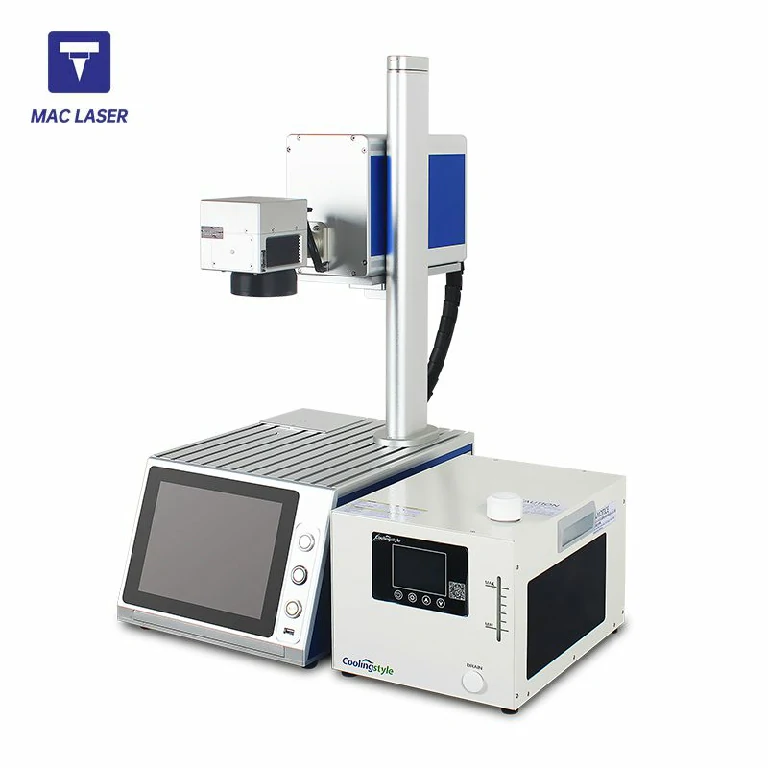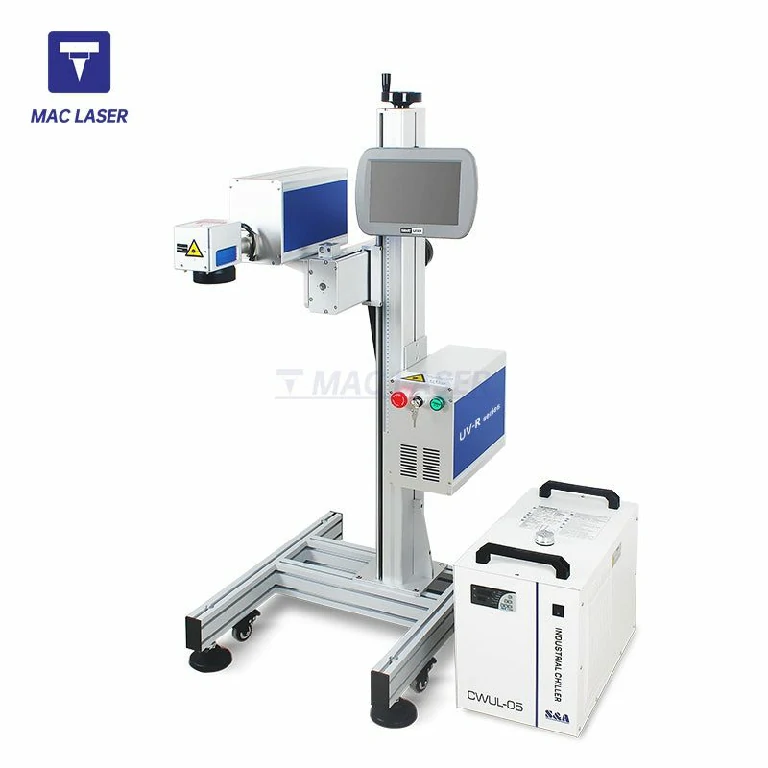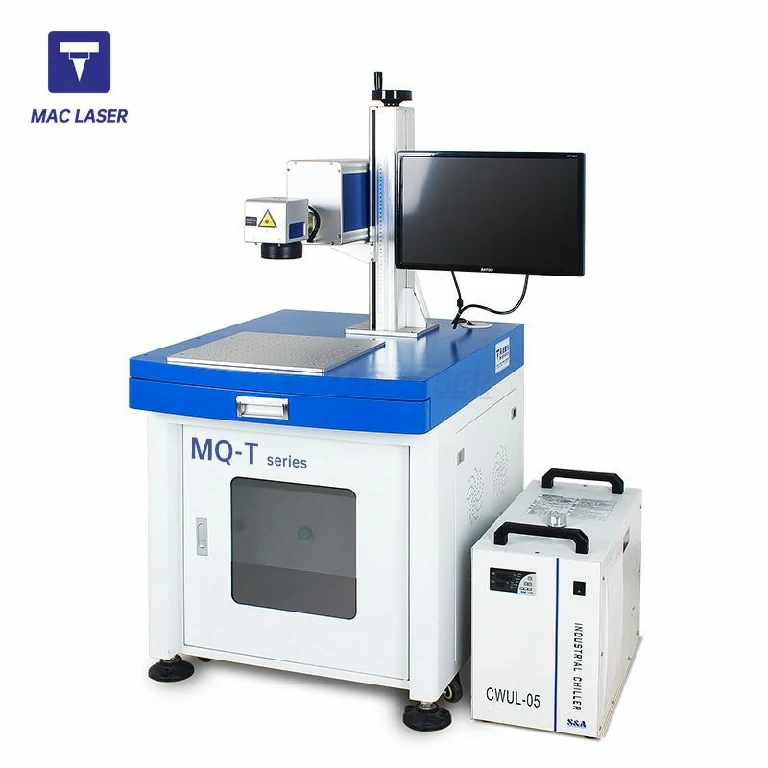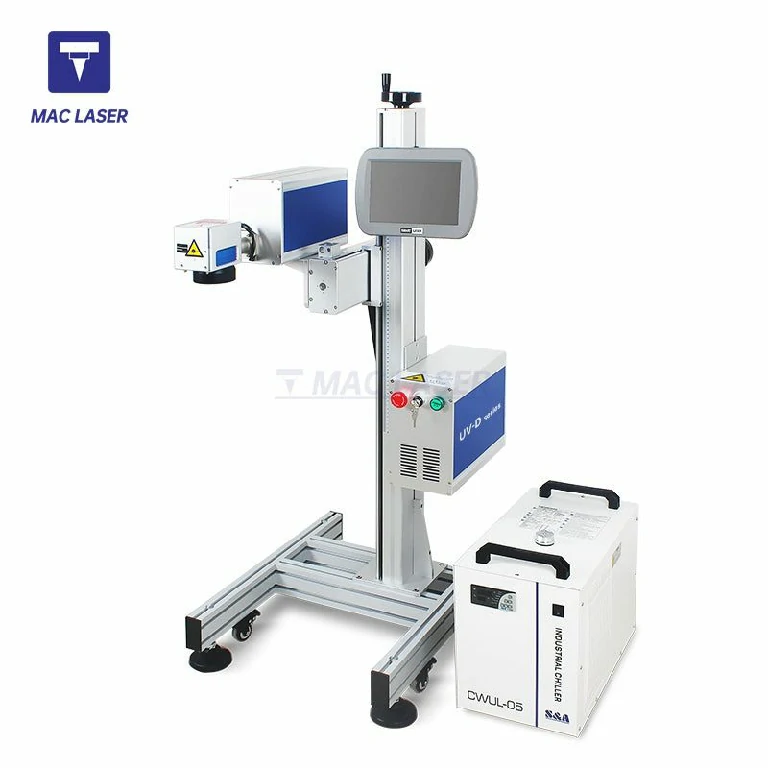


LASER MARKING ON CERAMIC SURFACES: TECHNIQUES AND APPLICATIONS
Laser marking is a process of creating permanent marks on the surfaces of various materials using a high-intensity laser beam. It is a precise and efficient method that offers high-quality, durable, and long-lasting marks.
Ceramic materials are often used in high-tech applications that require durable, corrosion-resistant, and high-temperature resistant properties. Laser marking on ceramic surfaces is a popular method to add logos, part numbers, serial numbers, barcodes, and other information for identification and traceability purposes.
RECOMMENDED LASER SOLUTIONS



MZF-B Portable UV Laser Marking Machine



UV-R Serial Flying UV Laser Marking Machine



MQ-T UV Laser Marking Machine



UV-D serial UV flying laser marking machine
Why Choose Laser Machines for Ceramics Marking?
HIGH CONTRAST MARKING
Ceramic surfaces can have a high level of reflectivity, making it difficult to create visible marks with traditional marking methods. Laser marking on ceramic surfaces, however, can create high-contrast marks that are clearly visible, even on reflective surfaces.
NON-CONTACT PROCESS
As ceramics are brittle and hard, traditional marking methods such as engraving, stamping, or etching can cause surface damage or cracking. Laser marking, on the other hand, is a non-contact process that creates marks without physical contact, thus reducing the risk of surface damage.
HIGH PRECISION
Ceramics are often used in applications that require high precision, such as the medical or aerospace industry. Laser marking offers high precision, allowing for the creation of detailed marks, logos, or designs that meet specific industry standards and requirements.
PERMANENT MARKING
Ceramic materials are known for their durability and resistance to wear, corrosion, or fading. Laser marking creates marks that are permanent and resistant to these elements, ensuring long-lasting identification and branding.
Ceramics You Can Mark
Laser marking is based on the principle of material removal or surface modification using a high-intensity laser beam. The laser beam interacts with the surface of the material and causes local heating, melting, or vaporization of the material.
The resulting physical or chemical changes on the surface create the desired marks. The laser marking process can be performed by different techniques for ceramic, including surface etching, carbonization marking, color marking, engraving, foaming, and ablation marking.
Ceramic pasrts: medical implants, ceramic tiles, dinnerware, exhausts, ceramic substrates, electronic components, and sensors.
Types of Lasers Used for Ceramic Marking
There are different types of lasers used for ceramic marking, including CO2 lasers, Nd:YAG lasers, fiber lasers, and UV lasers. Each type of laser has different characteristics, such as wavelength, pulse duration, energy density, and beam quality, which affect the marking quality and efficiency.
CO2 lasers are widely used for ceramic marking due to their high power, long wavelength, and good beam quality.
Nd:YAG lasers are suitable for marking on transparent ceramics and metals.
Fiber lasers offer high speed and fine resolution marking.
UV lasers are used for marking on ceramics that are sensitive to thermal damage.
Factors Affecting Ceramic Marking
Several factors affect the quality and efficiency of ceramic marking, such as the material properties, laser parameters, beam delivery system, marking speed, and marking pattern.
The material properties, such as hardness, density, and composition, affect the laser absorption, melting, and vaporization of the material.
The laser parameters, such as power, pulse duration, frequency, and beam shape, determine the energy and spatial distribution of the laser beam.
The beam delivery system, such as the focusing lens, affects the spot size and depth of the marks. The marking speed and pattern affect the overall efficiency and accuracy of the process.
Techniques of Laser Marking on Ceramic Surfaces
Surface Etching: Surface etching is a technique that removes a thin layer of the ceramic surface by localized melting and vaporization. This technique is often used for creating shallow and high-contrast marks, such as logos and text.
Carbonization Marking: Carbonization marking is a technique that uses the laser beam to induce a chemical change in the ceramic surface, creating a dark mark. This technique is often used for creating high-contrast and precise marks, such as barcodes and serial numbers.
Color Marking: Color marking is a technique that creates colored marks on the ceramic surface by changing the surface properties, such as the refractive index and the surface morphology. This technique is often used for creating decorative and aesthetic marks, such as patterns and images.
Engraving: Engraving is a technique that removes a layer of the ceramic surface by controlled melting and vaporization, creating a deep and permanent mark. This technique is often used for creating durable and readable marks, such as part numbers and identification codes.
Foaming: Foaming is a technique that creates a three-dimensional and porous structure on the ceramic surface by controlled melting and gas release. This technique is often used for creating anti-counterfeiting and security marks, such as holograms and microstructures.
Ablation Marking: Ablation marking is a technique that removes a thin layer of the ceramic surface by localized vaporization, creating a high-resolution and precise mark. This technique is often used for creating micro-scale and fine details marks, such as logos and symbols.
FAQs
Can laser marking on ceramic surfaces be used for high-temperature applications?
Yes, laser marking on ceramic surfaces can be used for high-temperature applications, as the marks are resistant to wear, corrosion, and fading.
What types of lasers can be used for ceramic marking?
Different types of lasers can be used for ceramic marking, such as CO2, Nd:YAG, fiber, and UV lasers, depending on the desired marks and material properties.
Is laser engraving on ceramic a costly process?
The cost of laser engraving on ceramic depends on various factors, such as the type of laser, the material properties, and the desired marks. However, laser engraving on ceramic can be a cost-effective and efficient process in the long run, as it provides high-quality and durable marks that can enhance product identification and traceability.

